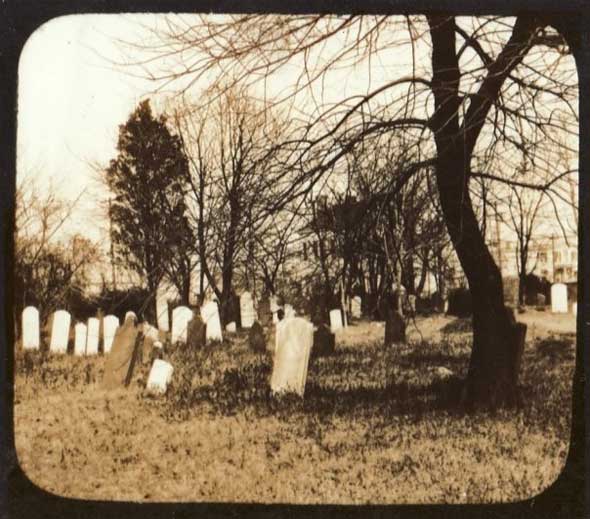Morbid 360th Anniversary, Gravesend Cemetery!

There’s a certain lexical contortion that must be performed when writing a headline to celebrate the anniversary of a historic cemetery. I began the headline with “Happy Birthday,” then figured “happy” was not appropriate. So I went with “morbid.” But then “birthday” sounded way off, so I changed it to “deathday,” but nothing seemed right about that. So I went with “anniversary.”
Although language may bar my ability to create a proper phrase to capture the day, it doesn’t stop facts from being facts. Yesterday marked the 360th anniversary of the first recorded burial in the town of Gravesend – and possibly within the current confines of the Gravesend Cemetery, according to Gravesend historian Joseph Ditta.
(Read our August 2009 Q&A with Ditta about Gravesend’s history and preservation.)
The burial of the unnamed infant son of William Wilkins took place on August 18, 1650. This first interment occurred seven years after Gravesend was settled by former English subjects under Lady Deborah Moody on land granted to them by the Dutch governor of New Amsterdam. It took eight more years for the graveyard to take on more officious boundaries, when a resident offered 20 guilders – Dutch gold coins – to fence in the southwest corner of the village, which constituted the cemetery.
But if you go today, don’t expect to see the Wilkins baby’s tombstone. The earliest surviving stone marker is marked 1724, and the oldest legible stone dates to 1768. Still, that’s mighty old.
And speaking of going today, your opportunity is coming. Locals are lucky to have the knowledgeable (and eminently friendly) Joe Ditta presenting a pre-Halloween tour of the area on Sunday, October 24 at 11:00 a.m.
The tour will cover more than 250 years of the cemetery’s history, and is filled with all the intrigue reflective of the city’s twisted growth. Hear about murder-suicides, possible poisonings, and the warped burials of Coney Island sideshow freaks.
The tour is being given in conjunction with the Salt Marsh Alliance (based in Marine Park) and its resident History Club. (For information, see http://www.saltmarshalliance.org/ or call 718-421-2021.) Also, check out the Facebook fan page for Ditta’s book, Gravesend, Brooklyn, and the tour’s event invitation.
The original version of this article said the settlers were Quakers. This is incorrect. Lady Moody was an Anabaptist.



